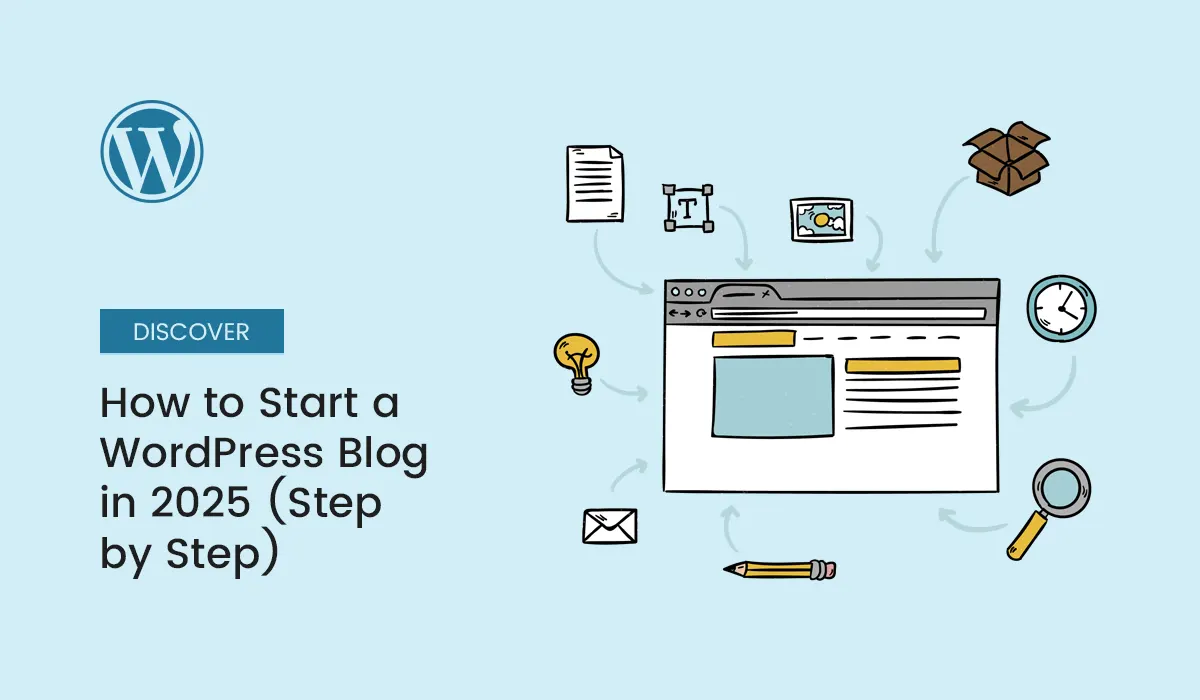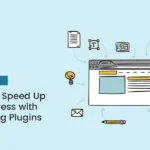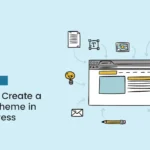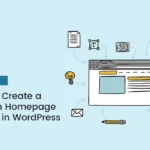Introduction
Starting a blog has never been more exciting than in 2025. With the right tools, strategy, and passion, you can create a blog that not only shares your voice with the world but also builds authority, attracts readers, and even generates income.
When it comes to blogging platforms, WordPress is the undisputed leader. More than 40% of all websites use WordPress because of its flexibility, ease of use, and endless customization options.
In this guide, you’ll learn how to start a WordPress blog step by step in 2025—from choosing your niche and domain to publishing your first post and optimizing for SEO.
Why Choose WordPress in 2025?
Before diving into the steps, let’s quickly cover why WordPress is still the best platform for bloggers.
- Free & Open Source – The software itself is free.
- Full Ownership – Unlike social media, you own your content and website.
- Plugins & Themes – Thousands of tools to extend functionality.
- SEO-Friendly – Built with search engines in mind.
- Scalable – Suitable for personal blogs, businesses, or full-scale media sites.
Whether you want to share travel stories, write tutorials, or build a business blog, WordPress can grow with you.
Step 1: Choose Your Niche
Every successful blog begins with a clear niche. Your niche defines the topics you’ll write about and the audience you’ll attract.
Tips for Picking a Niche in 2025
- Follow your passion – Write about something you love.
- Check profitability – Are there products or services related to the niche?
- Research audience demand – Use Google Trends, keyword tools, and social media.
- Find your unique angle – What can you do differently?
Examples of profitable niches in 2025:
- AI tools & automation.
- Sustainable living & eco products.
- Personal finance & investing.
- Health & wellness.
- Tech tutorials (WordPress, coding, design).
Step 2: Pick a Domain Name
Your domain name is your blog’s online identity (e.g., yourblog.com).
Tips for Choosing a Great Domain
- Keep it short and memorable.
- Avoid numbers and hyphens.
- Use relevant keywords if possible.
- Choose the right extension (.com is still best in 2025).
Example: If you’re starting a fitness blog → fitjourney.com or healthhub2025.com.
You can register a domain from providers like Namecheap, GoDaddy, or your hosting company.
Step 3: Get Web Hosting
To launch your blog, you need a web hosting provider to store your website files.
Recommended Hosting for WordPress in 2025
- Bluehost – Beginner-friendly, officially recommended by WordPress.
- SiteGround – Fast, secure, and excellent support.
- Hostinger – Affordable option with modern features.
- Kinsta – Premium managed WordPress hosting.
Most hosting providers offer 1-click WordPress installation, so setup is super easy.
Step 4: Install WordPress
Once you have hosting, install WordPress.org (the self-hosted version).
How to Install WordPress
- Use the 1-click installer in your hosting dashboard.
- Choose your domain name during setup.
- Log in to your WordPress admin panel at:
yourdomain.com/wp-admin.
Congratulations! 🎉 You officially have a WordPress blog.
Step 5: Select a Theme
Themes define your blog’s design and layout.
Free Themes (Great for Beginners)
- Astra – Lightweight and customizable.
- GeneratePress – Clean and fast.
- Kadence – Flexible with starter templates.
Premium Themes (For Serious Bloggers)
- Divi – Drag-and-drop builder.
- Thrive Theme Builder – Optimized for conversions.
- Avada – Multipurpose with tons of features.
Choose a theme that matches your niche and is mobile-friendly (very important in 2025).
Step 6: Install Essential Plugins
Plugins extend your blog’s functionality.
Must-Have Plugins in 2025
- Yoast SEO or Rank Math – Optimize for search engines.
- WP Rocket or W3 Total Cache – Speed optimization.
- Elementor or Gutenberg Blocks – Page building and design.
- UpdraftPlus – Automatic backups.
- Akismet – Spam protection.
- WooCommerce – Add eCommerce if needed.
Step 7: Configure Your Blog Settings
Before publishing, tweak your WordPress settings.
- Go to Settings > General and set your site title & tagline.
- Under Permalinks, choose “Post name” for clean URLs.
- Create essential pages: About, Contact, Privacy Policy, Disclaimer.
Step 8: Write Your First Blog Post
Now comes the fun part—publishing your first post.
Writing Tips
- Use a catchy headline (optimized for SEO).
- Write in a conversational tone.
- Break text into headings & subheadings.
- Add images, screenshots, or infographics.
- End with a call-to-action (CTA).
Example first posts:
- “10 Things I Learned About Fitness in 2025”
- “Beginner’s Guide to Using AI Tools for Blogging”
Step 9: Optimize for SEO
SEO is critical to getting traffic.
On-Page SEO Checklist
- Use your focus keyword in the title, URL, and headings.
- Write a meta description.
- Add internal and external links.
- Use alt text for images.
- Keep sentences short and scannable.
Bonus SEO Tools
- Google Search Console – Monitor performance.
- Google Analytics 4 – Track visitor behavior.
Step 10: Promote Your Blog
Publishing isn’t enough—you need promotion.
- Share on social media (Twitter/X, LinkedIn, Instagram).
- Join niche communities (Reddit, Facebook groups, forums).
- Start building an email list (with MailerLite, ConvertKit).
- Collaborate with other bloggers.
Step 11: Monetize Your Blog
Once your blog gets traffic, you can start earning money.
Ways to Monetize in 2025
- Affiliate Marketing – Promote products and earn commissions.
- Google AdSense or Ad Networks – Display ads.
- Sponsored Posts – Partner with brands.
- Sell Digital Products – eBooks, courses, templates.
- Offer Services – Coaching, consulting, freelancing.
Common Mistakes Beginners Make
- Picking too broad of a niche.
- Ignoring SEO.
- Using a free WordPress.com blog (limits monetization).
- Not being consistent with posting.
- Skipping backups and security.
Avoid these mistakes to set yourself up for long-term success.
Conclusion
Starting a blog in 2025 is easier than ever with WordPress. By following these steps—choosing a niche, setting up hosting, installing WordPress, picking a theme, and publishing your first post—you’ll have a professional blog ready to grow.
Remember: blogging is a journey. Stay consistent, keep learning, and your blog can become a powerful platform for your ideas, brand, and business.
Ready to share your ideas with the world? Learn how to start a WordPress blog today and build a successful online presence in 2025 and beyond!



